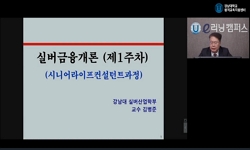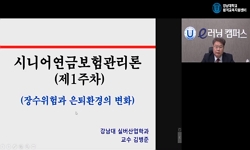한국의 사회복지재정에 대한 종래의 일반적인 시각은 경제수준에 비하여 복지지출수준이 현저히 낮다는 것이었다. 그러나 경제위기 이후 공공부조제도를 중심으로 사회복지지출이 급격히 ...
http://chineseinput.net/에서 pinyin(병음)방식으로 중국어를 변환할 수 있습니다.
변환된 중국어를 복사하여 사용하시면 됩니다.
- 中文 을 입력하시려면 zhongwen을 입력하시고 space를누르시면됩니다.
- 北京 을 입력하시려면 beijing을 입력하시고 space를 누르시면 됩니다.
https://www.riss.kr/link?id=A30000863
-
저자
박능후 (한국보건사회연구원)
- 발행기관
- 학술지명
- 권호사항
-
발행연도
2002
-
작성언어
Korean
-
주제어
사회복지지출 ; 사회복지재정 ; OECD기준 ; 복지지출의 경직성 ; 기업연금제도 ; Social expenditure ; public pension ; pension plan
-
KDC
338.000
-
등재정보
KCI등재
-
자료형태
학술저널
- 발행기관 URL
-
수록면
135-158(24쪽)
- 제공처
-
0
상세조회 -
0
다운로드
부가정보
국문 초록 (Abstract)
한국의 사회복지재정에 대한 종래의 일반적인 시각은 경제수준에 비하여 복지지출수준이 현저히 낮다는 것이었다. 그러나 경제위기 이후 공공부조제도를 중심으로 사회복지지출이 급격히 증가하면서 한국의 복지지출규모가 외국에 비하여 낮지 않다는 새로운 시각이 대두되기 시작하였다. 이러한 주장은 새로운 사회복지지출 집계방식을 사용하는 것과 맞물려 설득력을 더욱 얻어가고 있다.
대립된 두 시각을 염두에 두면서 본 논문은 한국사회복지재정의 현장을 규모와 구성내용 측면에서 외국과 비교하여 논의하고 있다. 논의 과정은 먼저 새로운 재정집계방식인 OECD 방식에 의거하여 한국의 사회복지지출규모가 최근 5년간 연평균 34.3%인 증가율을 나타냈으며, 그 결과 1999년 GDP의 11.8에 이르렀다는 사실을 적시함으로써 사회복지지출규모가 과거에 비해 상당수준 증대되었다는 사실을 수긍하고 있다. 그러나 이러한 사실이 한국의 사회복지지출규모가 이미 적정수준에 도달하였거나 가까운 장래에 도달하게 될 것임을 보여준다는 주장에 대해서는 반박을 가하였다.
그 논거는 첫째, GDP의 11.8%를 차지하는 사회복지지출 비중은 국민소득수준을 통제한 상태에서 선진외국의 복지지출규모와 비교하여 현저히 낮다는 점이다. 더욱이 그 포함여부가 논란되고 있는 퇴직금을 집계에서 제외하면 실제 복지지출은 GDP의 7.5%에 불과하게 되어 현재의 복지지출수준은 더 낮아진다. 둘째, 최근의 급격한 복지지출상승은 대부분 임시대응적인 비용의 증대에 기인하는 것으로서 구조화된 복지비지출증대가 아니며, 경제여건이 호전되면 사회복지비지출이 감소할 가능성이 높다는 점이다. 따라서 현재의 증가추세를 유지한다는 가정하에 가까운 장래에 한국의 복지지출규모가 선진국 수준에 도달할 것이라는 주장은 근거가 미약한 것이다. 셋째, 민간기업이 부담하는 퇴직금지급의 증가가 최근의 복지지출증가를 주도하고, 노인·장애인 둥 취약계층에 대한 복지비용은 증가율이 오히려 감소하고 있어 복지지출의 구성면에서 적정성과는 거리가 멀어지고 있다는 점이다.
현장분석을 기초로 사회복지재정의 발전방향을 논하기 위하여 본 논문은 연금·의료·공공부조제도별 장기 재정소요를 추계치에 의거하여 분석하였다. 그 결과 향후 10년간 노령화의 급속한 진전에도 불구하고 연금제도에 의한 복지지출은 별로 변화가 없으며, 이를 보완할 공공부조제도의 임시적 확충이 필요하다는 주장이 도출되었다. 이에 비해 의료비증가는 상당히 우려되는 상황이며, 이를 적정수준내에 통제할 기제의 개발이 시급함을 지적하였다. 아울러 복지재정의 주요 몫을 차지하고 있는 퇴직금재원을 발전적으로 활용할 수 있는 제도 고안의 필요성을 제기하였다.
다국어 초록 (Multilingual Abstract)
Since the economic crisis of 1997, social policy experienced noteworthy expansion and development across various social sectors in Korea, which resulted in a sudden increase in social expenditure. Those who were critical of the expansion have pointed ...
Since the economic crisis of 1997, social policy experienced noteworthy expansion and development across various social sectors in Korea, which resulted in a sudden increase in social expenditure. Those who were critical of the expansion have pointed out that the resulting increase in its budget has produced difficulty in appropriating government finances and impeded the potential for economic growth. In contrast, supporters argue that the Korean social expenditure remains well below the appropriate level, insufficient of the amount needed. Such opinions concerning the social expenditure have been in tense opposition as Korean people have overcome the economic crisis.
In order to establish an objective perspective, this paper concentrates on the following points. First, this paper examines how much, in what areas, and for what reasons the budget concerning social policy increased. Second, predictions on future trends in the fiscal scale are discussed. Third, arguments regarding overspending or underspending are discussed through comparative analyses with other countries.
This paper finds that significant increase in the social expenditure in terms of scale and a proportion of GDP has been mostly due to the increase of temporary expenditures, such as counter-unemployment measures, while long-term expenditure is maintaining a stable trend. This paper also asserts that the present scale of social expenditure in Korea, when observed through comparisons with the standard levels of national income, is in no way small. However, the current expenditure increase does not seem warranted as spending is likely to decrease with changes in the policy-making environment.
In order to maintain the adequate level of social expenditure, this paper offers two suggestions. The first one is to produce institutional mechanisms to curb health expenditure under a certain limit. The second one is to improve the retirement payment scheme. To enable social intervention and management of the retirement payment scheme, it is urgent to produce measures, such as corporation pension plan.
동일학술지(권/호) 다른 논문
-
- 서울대학교 한국사회복지연구회
- 구인희
- 2002
- KCI등재
-
- 서울대학교 한국사회복지연구회
- 강남식
- 2002
- KCI등재
-
- 서울대학교 한국사회복지연구회
- Kim, Sunah
- 2002
- KCI등재
-
국제비교연구를 위한 빈곤측정상의 쟁점과 이에 따른 국가간 빈곤의 편차
- 서울대학교 한국사회복지연구회
- 김환준
- 2002
- KCI등재





 KISS
KISS




